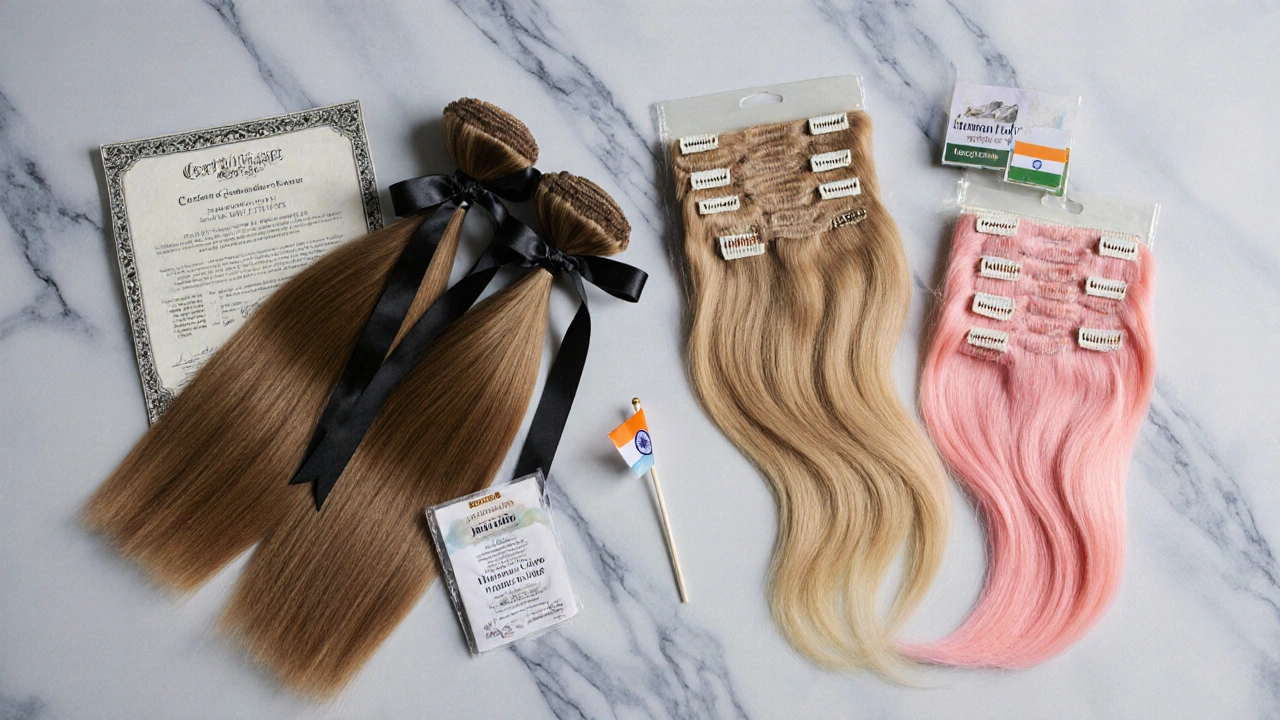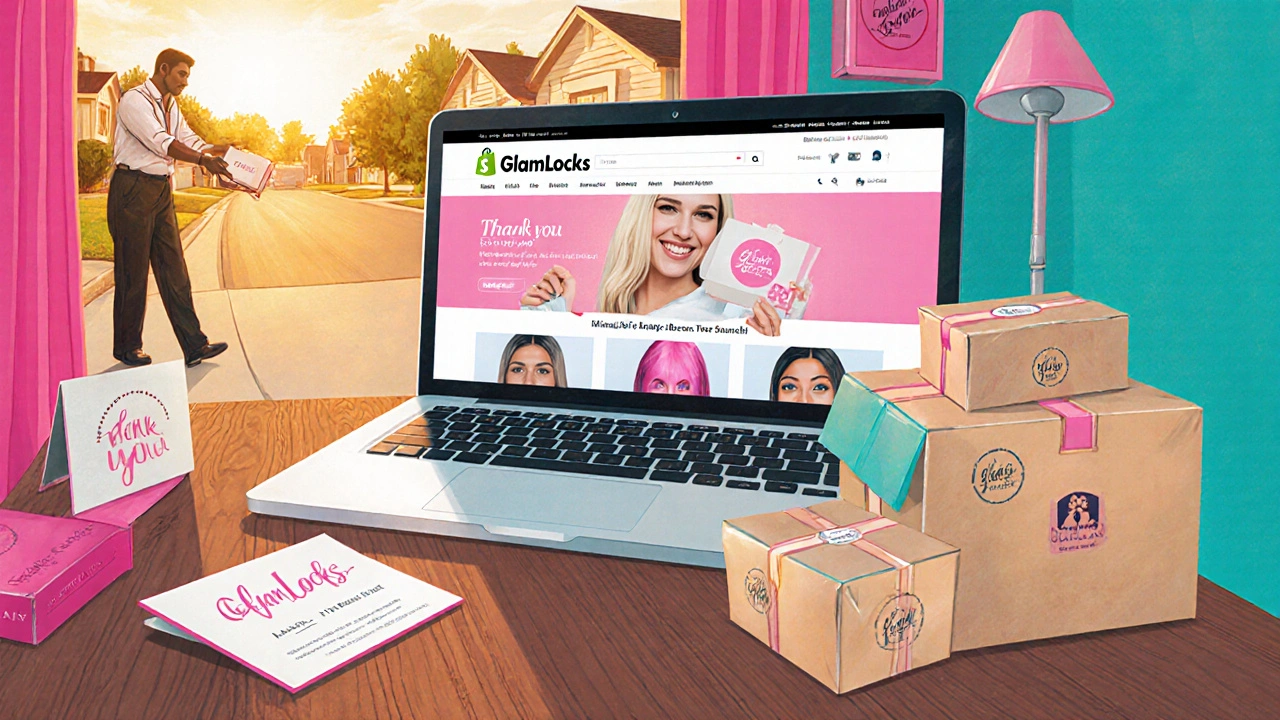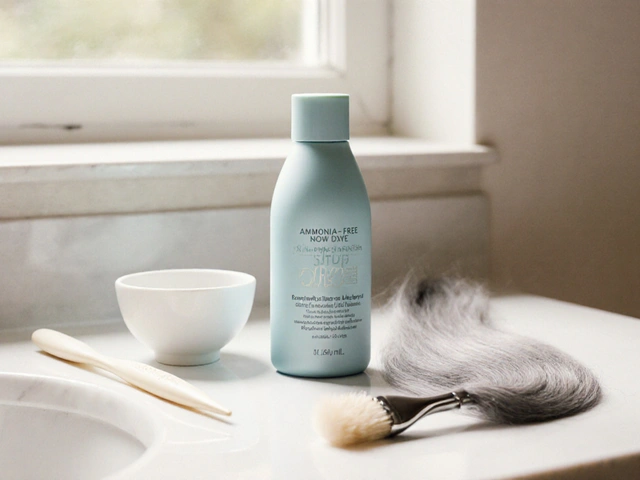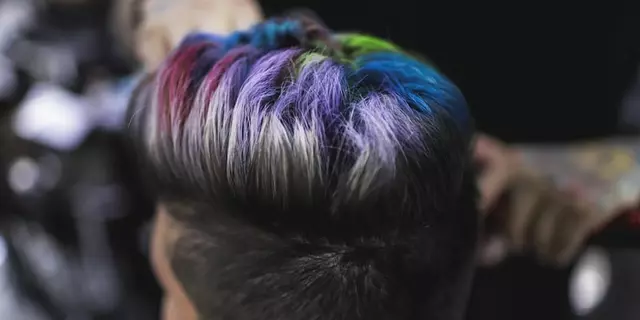Hair Extensions Pricing Calculator
Dreaming of turning a love for beautiful hair into a thriving shop? You can launch a hair extensions business without a massive upfront investment-if you follow the right steps and avoid common traps.
Quick Takeaways
- Pick a niche (human vs. synthetic) before you buy inventory.
- Validate suppliers with samples, return policies, and ethical sourcing.
- Register a business name, get a license, and protect your brand early.
- Sell on an e‑commerce platform while also courting local salons.
- Set up inventory and shipping processes that keep customers happy.
1. Understanding the Market
Before you spend a dime, learn who’s buying extensions and why. In 2024, the U.S. market for hair extensions was worth $2.3billion, with a 6% annual growth rate. Most buyers are women aged 18‑35 seeking volume, length, or a quick style change for events. Instagram and TikTok drive trends-colors and clip‑in styles skyrocket after a viral post.
Use free tools like Google Trends and Instagram hashtags (#hairextensions, #clipins) to spot rising styles. Talk to a few stylists at local salons; they’ll tell you which lengths, textures, and colors clients request most often. This research shapes your product mix and pricing.
2. Choosing Your Product Type
Extensions fall into two broad categories. The choice affects cost, target audience, and marketing angle.
Human hair extensions are sourced from real donors, processed, and often sold as premium items. They can be styled with heat, dyed, and last up to 6months with proper care.
Synthetic hair extensions are made from man‑made fibers, usually cheaper, and hold a fixed shape. They’re great for short‑term looks and budget‑conscious buyers, but they can’t be heat‑styled.
| Feature | Human | Synthetic |
|---|---|---|
| Price per ounce | $50‑$120 | $15‑$40 |
| Heat styling | Yes | No |
| Longevity | 4‑6months | 1‑2months |
| Allergy risk | Low | Higher (chemical fibers) |
| Ideal buyer | Premium & salon clients | Fast‑fashion shoppers |
Pick the line that fits your budget and brand story. Many startups start with a small, mixed inventory-say, 3human bundles and 5synthetic styles-to test demand.

3. Finding Reliable Suppliers
Quality is king. Lower‑priced suppliers may deliver tangled, low‑grade hair that spikes returns.
Start with a short list of wholesale suppliers. Look for these red flags:
- No sample policy or no photos of actual product.
- Vague country of origin (e.g., just “Asia”).
- Minimum order quantities (MOQs) that drain cash.
Order a sample pack from each contender. Evaluate texture, shine, and how well the hair holds heat. Request a Certificate of Authenticity if you’re buying human hair; reputable vendors from India, Vietnam, or Brazil provide it.
When you’ve narrowed it down, negotiate terms: 30% deposit, 70% on delivery, and a clear return policy for defective bundles.
4. Legal Setup & Business Structure
Running a business without the proper paperwork can cost you more than a few fines.
Business license is required in most U.S. cities, including Houston. Check the Houston Permitting Center website for the exact fee (around $150) and turnaround time.
Choose a legal structure:
- Sole proprietorship - simplest, but you’re personally liable.
- LLC - protects personal assets, relatively low filing cost ($300 in Texas).
- S‑Corporation - good for scaling, but more paperwork.
Register your DBAs (Doing Business As) if you plan to use a catchy brand name like “GlamLocks”. Then apply for an EIN (Employer Identification Number) at the IRS-free and needed for a business bank account.
5. Building Your Brand & Pricing Strategy
Brands that tell a story sell better. Are you “eco‑friendly”, “celebrity‑inspired”, or “budget‑beauty”?
Create a simple logo (Canva or Fiverr) and a color palette. Use the same fonts on your website, social media, and packaging.
Pricing tip: Add 2×your cost for human hair and 1.5×for synthetic. Example: If a human bundle costs $45, price it at $90‑$100. Include shipping in the price to avoid surprise fees that cause cart abandonment.

6. Setting Up Sales Channels
Most new extension sellers start online and later add offline partners.
E‑commerce platform options like Shopify, BigCommerce, or Squarespace give you a storefront in minutes. Shopify’s built‑in payment gateway, low transaction fees, and app ecosystem (e.g., inventory sync) make it a favorite.
Don’t ignore Instagram Shopping and TikTok Shop-visual platforms where extensions shine. Tag products in posts, use story polls to gauge interest, and run limited‑time discount codes.
Local salons love to carry premium bundles for their clients. Pitch a wholesale discount (e.g., 40% off retail) and supply them with display trays. In exchange, ask for a “recommended by” badge on their website.
7. Managing Inventory, Shipping & Customer Service
Even a small inventory can get messy if you don’t track it.
Use a lightweight inventory management system like Sortly or TradeGecko. Scan each bundle’s SKU, set low‑stock alerts, and generate purchase orders automatically.
Shipping tip: Offer free standard shipping on orders over $75 and use USPS Priority Mail for faster delivery. Pack bundles in recyclable boxes with a small “thank you” card-customer delight leads to repeat sales.
Customer service is a make‑or‑break factor. Set up a shared inbox (Gmail or Zendesk) and create a FAQ page that covers sizing, care instructions, and return policy. Aim to reply within 12hours.
8. Checklist & Next Steps
- Research market trends and define your target niche.
- Choose human, synthetic, or a mix of extensions.
- Order samples from 3‑5 wholesale suppliers; select the best.
- Register your business, obtain a license, and get an EIN.
- Design logo, packaging, and set pricing based on cost multipliers.
- Launch a Shopify store; connect Instagram Shopping.
- Set up inventory software and choose a reliable shipping carrier.
- Create a customer‑service SOP (standard operating procedure) and publish a FAQ.
Follow this roadmap, tweak as you gather data, and you’ll be on track to turn a side‑hustle into a profitable hair extensions business.
Frequently Asked Questions
Do I need a special permit to sell hair extensions?
No separate cosmetic permit is required for extensions, but you must have a general business license from your city or county. If you plan to import human hair, keep the Certificate of Authenticity for customs.
How much inventory should I start with?
A modest starter kit of 10‑15 bundles (mix of human and synthetic) lets you test demand without tying up cash. Reorder based on the best‑selling colors and lengths.
What’s the safest way to source human hair?
Choose vendors who provide a Certificate of Authenticity, clear donor‑origin information (e.g., India, Vietnam), and a documented quality‑control process. Request a video of the sorting and cleaning steps before you commit.
Should I sell wholesale to salons?
Yes-salon partnerships give you recurring bulk orders and brand credibility. Offer a 40% discount off retail and provide marketing material they can display in‑store.
How do I handle returns?
Set a 14‑day return window for unopened, unused bundles. Require photos of the product condition before issuing a refund. Clear policies reduce disputes and protect margins.







Wilda Mcgee
October 7, 2025 AT 07:07Embarking on a hair extensions empire can feel like stepping into a vibrant kaleidoscope of colors, textures, and endless possibilities. First, soak up the market vibes by scrolling through TikTok reels and Instagram hashtag storms to see which shades are popping. Next, decide whether you want to dance with luxurious human hair or groove with affordable synthetic strands – each has its own rhythm and audience. Once your niche sings, hunt down suppliers who actually send you a sample bundle before you pour cash into a massive order. Pick vendors who hand you a Certificate of Authenticity, because nobody wants a surprise of fake fibers under the salon lights. When you’ve found that sweet spot, lock in a clear return policy – think of it as a safety net that catches tangled mishaps before they spiral. Register your business name, snag an LLC if you crave a shield for personal assets, and grab an EIN so the bank will take you seriously. Design a logo that bursts with personality – maybe a glittering lock of hair or a bold font that whispers confidence. Build a Shopify storefront, sprinkle it with Instagram Shopping tags, and watch traffic flow like a river of eager clients. Stock a modest starter kit of 10‑15 bundles, mixing a few human and synthetic pieces to test the waters without draining your wallet. Use a lightweight inventory app to keep track of SKUs, set low‑stock alerts, and automate reorders when a shade starts to sell like hotcakes. Offer free shipping over a certain threshold, and slip a handwritten thank‑you note into each package for that extra sparkle of delight. Train a shared inbox to answer questions within twelve hours – rapid, friendly replies turn first‑time buyers into repeat fans. Keep an eye on profit margins with the built‑in calculator: double the cost for human hair, 1.5× for synthetic, and always factor in shipping before you shout a price. Celebrate every tiny milestone, from the first sale to the first five‑star review, because morale is the silent engine powering growth. Finally, stay adaptable; tweak your product mix, refresh your branding, and let data guide your next bold move. With patience, hustle, and a dash of glitter, you’ll watch your hair extensions dream bloom into a thriving business.
Chris Atkins
October 31, 2025 AT 22:18Love the step‑by‑step vibe it feels like a roadmap for anyone who wants to turn a hobby into a hustle
Jen Becker
November 25, 2025 AT 14:29Sounds pricey but doable.